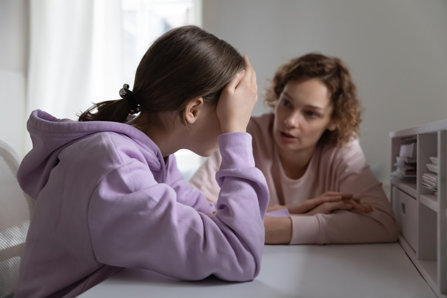Opioids and Virtual Street Corners – How Drugs are Illegally Purchased in the 21st-Century

When people think of a drug deal, they usually think of street corners at night, dimly lit by street lamps, in a bad part of town. They think of shady alleyways, and clandestine back-and-forths between people who keep their voices low and their faces hidden. When people think of a drug deal, they don’t usually think of an electronic transaction, a computer screen, and a few strokes of a keyboard.
Unfortunately, online drug dealing is becoming just as common and just as dangerous for families as in-person drug dealing.
The trafficking of drugs across the nation and the purchase and sale of drugs is now just as much of a cyber problem as it is an in-person problem. Families, law enforcement organizations, communities, and tech companies must change their respective public health and safety models to account for the significant change in how drug dealing is done in the 21st-century.
A New Study Reveals the Scope of Online Drug Sales
There is no doubt that the opioid addiction epidemic has wreaked havoc upon the United States since it began in the late-1990s. This is still a serious health problem today, and it’s getting worse. The opioid crisis is a National Public Health Emergency, and it has not shown any signs of going away or resolving on its own.
A big part of tackling the opioid crisis will come from studying how opioid supply chains work and how drug dealers move opioid products from their stockpiles into the hands and veins of addicts. According to one study that sought to map the supply chain for opioid drugs, the role of anonymous, clandestine online marketplaces, forums, stores, and auction rooms that resemble eBay or Amazon have become increasingly prevalent. These are websites where anyone can post for sale, or browse, and purchase opioid substances with discretion.
A February 2021 study published in JMIR Publications put forth some concerning findings regarding the sheer scope of online drug trafficking. Quoting the study authors, “A total of 248,359 listings from 10 anonymous online marketplaces and 1,138,961 traces (i.e., threads of posts) from 6 underground forums were collected. Among them, we identified 28,106 opioid product listings and 13,508 opioid-related promotional and review forum traces from 5147 unique opioid suppliers’ IDs and 2778 unique opioid buyers’ IDs.”
The researchers, most of whom are specialists at The University of Texas Health Science Center at Houston (the School of Biomedical Informatics), arrived at those findings using special programming language they created to site-crawl through marketplaces on the dark web. Quoting Xiaoqian Jiang, a professor of biomedical informatics, “Once we were in the sites, we began to look for jargon patterns and trends to understand what was going on. We used algorithms and forums to detect key words and were able to find sites, listings, and suppliers who were selling opioids.”
“There is a level of sophistication to this trade that I don’t think many people realize. In order to buy the product, you have to use cryptocurrency, which requires a high level of technology...”
Tiffany Champagne-Langabeer, an assistant professor of health informatics at the School of Biomedical Informatics and the senior author of the study, also provided valuable comments. “There is a level of sophistication to this trade that I don’t think many people realize. In order to buy the product, you have to use cryptocurrency, which requires a high level of technology. When you think of opioids or heroin you think of drugs being sold on the street, but I think what we found here is that it is a lot more complex and sophisticated in how they are able to obtain and distribute these products. People can buy and sell at a much faster rate globally using the web.”
It would seem that online drug sales are a lot more common than previously thought, a dire situation that poses considerable risk to Americans, particularly young people.
Online Drug Sales and Young People

One can imagine that drug sales pose a particular risk to young people primarily because young people tend to be more tech-savvy and could be more likely to seek a tech-based solution to getting drugs. That risk is further exacerbated by the fact that older people (their parents) are not as likely to be aware of this threat.
Furthermore, having the option of buying drugs online might make young people more likely to experiment with drugs, as they don’t have to confront the risky, face-to-face task of seeking out a drug dealer and purchasing drugs in-person. Younger adults and teens may feel more comfortable buying drugs from a computer screen in the perceived comfort and safety of their own homes. Online drug trafficking effectively removes one of the barriers that traditionally prevents young people from experimenting with drugs, i.e., the fear of getting caught.
The Highest Cost of Drug Abuse is Not Measured in Dollars but in Lives – Why Tackling This Problem is so Important
According to the Centers for Disease Control and Prevention, nearly 841,000 people have died from drug overdoses since 1999. It is one of the leading causes of preventable death in America, with more people dying from overdoses than car accidents or suicide. In 2019 alone, almost 71,000 Americans lost their lives to drug overdoses, a 4% increase in fatalities from 2018.
Opioids are driving the epidemic of overdoses. Opioids account for about 70% of all drug-related fatalities each year. Opioids were also the most frequently cited drug found in the online drug trafficking and sale network, as outlined by the study mentioned earlier.
Online drug trafficking is costing Americans their lives, and something must be done to curb the growing trend of buying, selling, shipping, and receiving addictive and potentially lethal opioids.
What Families Can Do to Protect Their Loved Ones from Online Drug Trafficking

While federal and state-level organizations are working hard to combat the growing problem that is the dark web (and everything that comes with it), individual families and communities must also take action to protect themselves.
When people purchase drugs online, they have no way of knowing what they are going to get in the mail or what that substance could do to their bodies. That’s why families cannot wait for a large-scale crackdown on the dark web. Families must act now to protect each other.
Parents can start by talking to their kids about drugs and discussing how drugs are harmful. Such a discussion gets young people thinking about why they would not want to use drugs in the first place.
Family members can also impose better internet security, parental locks, and digital safeguards that keep household computers and devices from accessing the dark web. From firewalls to cybersecurity, there are several ways to protect a home from illegal websites.
Families must also know the signs of drug use and what to look for. If a son or daughter or another family member is already using drugs, the family must come together and get them into a residential drug treatment center as soon as possible.
Sources:
- doi:10.2196/24486
- https://www.uth.edu/news/story.htm?id=c34d3999-6bd9-4e05-becd-d26ea041f3ab
- https://www.cdc.gov/drugoverdose/data/statedeaths.html


 ®
®